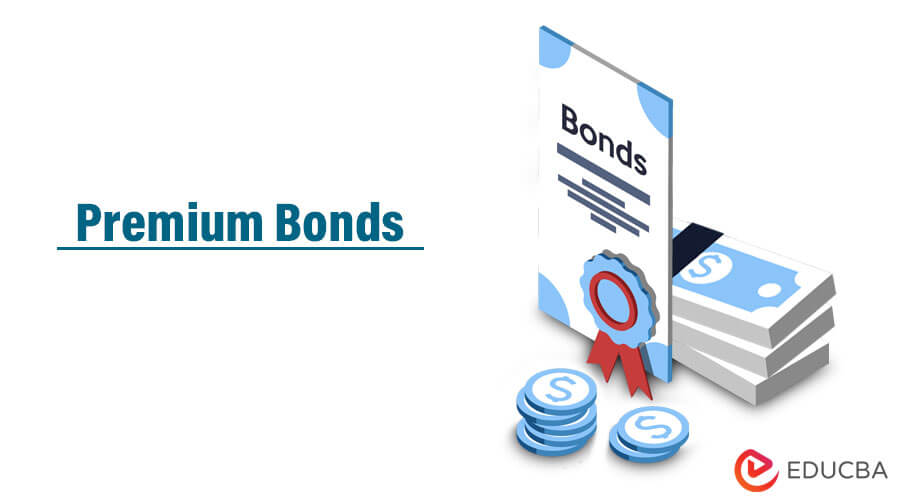Updated July 15, 2023
Introduction of Premium Bonds
A premium bond is a bond that is valued higher than its face value (i.e.) at a premium. A bond might be valued and traded at a premium because of the returns it gives to its investors (i.e.) the interest rate offered by the bond will be higher than the market rate and other bonds.
Explanation
Bonds are fixed-income securities that pay the bondholders’ interest until maturity. Market rate movements will not change the interest rate of the bond. As the interest rate doesn’t change concerning market conditions, the bond changes’ its value with respect to interest rate movements.
Premium bond usually trades for more than their face value, and it is purchased by investors considering their benefits, like higher interest rate, the credit rating of the company issuing the bond, the creditworthiness of the company, etc.
Features of Premium Bonds
- Premium bonds trade more than their face value.
- Premium Bond holders receive higher interest compared to the market rates.
- It trades at a high value considering the issuing company’s credit rating and the company’s financial strength.
How Do Premium Bonds Work?
Bonds are stable income securities, and it offers fixed interest income. The market movements don’t affect the bonds’ interest but change the market’s bond value trading. Bonds can be traded either in premium, face value, or discount.
The companies issue the bonds at face value, and the bond price moves up and down based on the market interest rate movements. When the bond’s interest rate is lower than the market interest rate, the bond loses its value, and the price will decrease. It trades at a discount as the new bonds offer more interest. It is vice versa if the interest offered by the bond is more than the market interest rate; in that case, investors get better returns from the bond than the new bonds offered. Accordingly, the bond price increases in the market and trades premium.
Bonds can trade at a premium price, even based on the status of issuing companies. If a well-established, financially stable company issues a bond with a good credit rating will have high demand in the market as the investors feel the investment is more secure and the risk of default is less.
Example of Premium Bonds
X Corp issues bonds of $1,000/ bond with a 5% interest rate which matures in 10 years.
Mr. A bought 10 bonds from X Corp for $10,000. After2 years the interest rate in the market fell, and now the new bonds offer only 2% interest. Considering the situation, X Corp pays more to its investors than the market interest rate. So, in the secondary market, X Corp bonds start trading in premium as there will be more demand to buy this high-return bond from the market. The bond’s face value is $1,000 and trades at $1,050.
In the above-mentioned scenario, if the interest rate in the market increases after 2 years and offers 7% interest, then the new bonds pay more interest, so investors may not prefer the X Corp bonds as it offers low interest. It will start trading in the secondary market at a discount. The bond’s face value is $1,000 and trades at $950.
How to Buy Premium Bonds?
Premium bonds are traded in the secondary market; an investor who expects more return than the market rate and wants to buy from a high credit rating issuer can go for these bonds, considering the returns and security of investment.
How to Sell Premium Bonds?
As mentioned above, premium bonds can be sold in the secondary market. When investors want to liquidate their investment, they can sell the same in the market and take their money from the investment.
Advantages
- It offers a higher interest rate than the market rate, and the bondholders receive better returns than the average market returns.
- Companies issue it with good credit ratings.
- Well-established and well-managed companies issue it with good creditworthiness.
- It is less volatile than stocks and a safe investment option.
Disadvantages
- Premium bonds trade at a higher price than face value; the higher price partly offsets the premium bond’s higher interest rate. So, the net gain is reduced.
- Paying too much premium is risky to bondholders as the bond value changes based on the market interest rate movements.
- There is a risk of overvaluation of the bond price.
- The longer the bond period, the riskier for investors, as the interest rate is fixed and will not change according to market changes.
Conclusion
Bonds are fixed-income securities that trade at a premium price considering the returns, creditworthiness of the issuing company, etc. When the demand for the bond increases in the market, it pushes the bond price to high. Bond prices can be volatile in the market; they may not always be at a premium or discount as market movements determine it. When the returns are better than the market rate, the price moves up, and when the returns are lower than the market rate, then the price of the bond reduces as investors lose interest in the investment.
Recommended Articles
This is a guide to Premium Bonds. Here we also discuss the introduction and how premium bonds work. Along with advantages and disadvantages. You may also have a look at the following articles to learn more –


